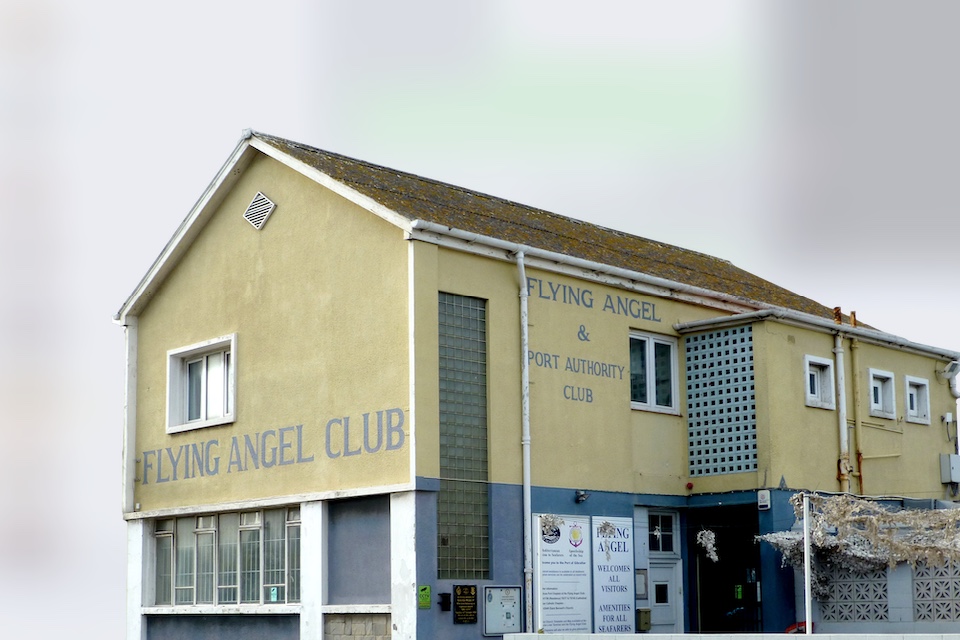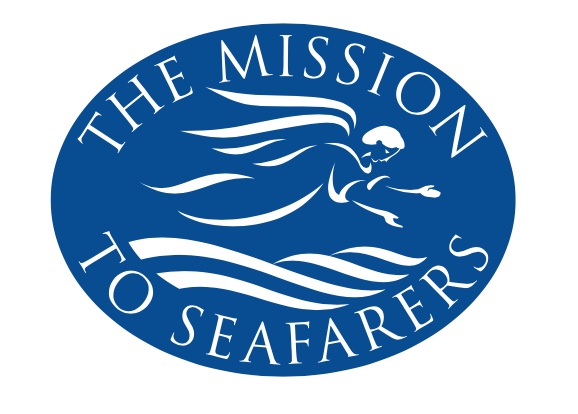Mediterranean Mission To Seamen At Gibraltar
The two men that were mainly responsible for starting work among seafarers about a hundred years ago, were Gibraltar’s fourth Bishop and first Dean. Canon Charles Waldegrave Sandford was consecrated Bishop of Gibraltar on February 1st 1874, at the comparatively early age of 44, and enthroned In the Cathedral of the Holy Trinity a fortnight later. On reaching his Cathedral City, Bishop Sandford found there was a sailor’s Home in Engineer’s Lane, opened mainly through the efforts of Captain Augustus Phillimore , Senior Naval Officer here from 1869 to 1874. This home catered for crews left ashore while waiting to be engaged by another ship or waiting to be repatriated after shipwreck. It is interesting that this Home, which came to be called “The Red Ensign Club,” remained in existence until 1976, although in these days seamen left ashore were usually whisked away by air. The energetic young Bishop was soon off on his first tour of his Dioceses, where he continued to travel extensively until his death in 1903. In many ports around the Mediterranean he could see forest of masts of British ships, but rarely found anyone caring for their crews when ashore. Happy exceptions were Nice, Antibes and Marseilles, where the Reverend Decimis Storry Govett had long been doing everything he could to help British sailors for over ten years. In all he worked there for 19 years. After many differences of opinion about who should be appointed to the Cathedral of the Holy Trinity, and under what title, the Secretary of State appointed Mr Govett to Gibraltar in 1881. One imagines that Bishop Sandford had something to do with the choice as he had such a great appreciation of his work on the Riviera. The permission of the secretary of State and the Governor General, General Lord Napier of Magdala, was given to the Bishop to appoint his Arch deacon the following year. Not long after Govett’s appointment, he wrote to the Bishop :- A very large proportion of the seamen remain in port for only a brief period, while the ships are coaling, but quite long enough, nevertheless, for an incalculable amount of good to be effected among them by an active seaman’s Chaplain or Scripture Reader, at the trifling cost of some £160 per year. The influence of a short prayer meeting, some reminder of divine things, the religious and temperance publications distributed by him on board, would not only benefit the sailors themselves, but be carried by them to the ends of the earth. Many a foreign port, containing not one fourth of the British seamen as we have here, has its own Chaplain appointed specially to administer to their welfare; but Gibraltar has thus far no single person to care for their moral and spiritual needs. Your Lordship is aware that with my sole charge of the cathedral services, the school, the civil hospital, the prison, lunatic asylum, and the visitation of the sick, it is wholly beyond my power to attempt to evangelise this multitude of seamen also. The local government, when petitioned for funds has declined; the Seaman’s Societies at home have exhausted their resources, or would most gladly come to our help. Under the circumstances I am constrained to appeal to you, feeling confident that if the facts and figures are generally known, Christian hearts would be touched. And Christian charity awakened; for England has ever shown the deepest interest in her sailors, to whom hardship and intrepidity we owe not only our personal comforts and luxuries, but the wealth and greatness of our Empire. To this the bishop added “It must not be supposed that efforts have not been made in previous years to provide ministrations for this vast number of British sailors which annually visit Gibraltar. Appeals have been made but in vain.As a result of this appeal and others from the Diocese, Bishop Sandford sought help in England for “The Gibraltar Mission to seamen in the Mediterranean” and administered money received through a Spiritual Aid Fund. When next visiting Gibraltar he called on agents and mercantile companies accompanied by Captain the Honourable Edward Fremantle, RN and Colonel Ravenhill to discuss the moral and religious needs of sailors here. They agreed to levy a tax on each of their ships entering port, to help pay for the work. In Liverpool, certain merchants had promised to give £240 per annum for five years, from which the Bishop allotted £40 a year to the salary of a Lay Reader at Gibraltar. By September 1883, £62 had been collected here but most of it had to be spent to buy a boat, which was essential. Before the end of the year Mr Robinson was appointed Lay Reader.Mr Robinson, said in his report that in his first six months he had visited 580 ships and 45 hulks, where he distributed 800 bibles and prayer books, with 60,000 tracts and magazines. Aboard each ship he visited he tried to persuade the captain of the crew or the mate to hold services on Sundays while at sea, and talked to all members of the crew. The Mission tried to obtain a hulk in 1885 as a Chapel Ship or Bethel, with a room for services and a reading room besides a home for the Lay Reader with a substantial vessel in the bay, thought Arch Deacon Govett, with the Mission flag flying at the masthead, it would make the captains and agents proud of the missions, and more willing to contribute to its upkeep. But the necessary £400 was not forthcoming and the project was dropped.The Bishop called on the merchants again when he was here in 1887, when a lending library was established, followed by a Seamen’s Guild in 1893. A quarterly Mission paper appeared in 1895. The number of British sailors calling here continued to soar, from 50,000 to in 1870 to 83,000 in 1880 and 95,000 next year. The peak number was no less than 139,000 in 1889/90, and although the figure dropped slightly afterwards, it remained about 100,000 for many years. But the appointment of a Lay Preacher did not prove popular. Was it the salary? Mr Robson was succeeded in 1884 by Mr Sylvester, the next year by Mr J Glover, and the following year by Mr F.G. Copeland who remained for six years. In 1892 he was succeeded by the Reverend A Evans, as a seaman’s Chaplain, he left the following year for Malaga. A soldiers’ Missioner, actually a Free Churchman, then acted temporarily until Reverend Richard Shiers-Mason was appointed Chaplain in 1893, beginning a long connection with the port which only ended with his death in 1934.He reported that he found a distinct advantage in ship visiting, comparable to parochial visiting in its personal touch with individuals. In fact that, for the most part, the crews did not go ashore meant that he could not meet men who would normally not visit a seaman’s home. His work was a priceless opportunity of serving a body of men among whom “those things that get a sailor a bad name are often very much on the surface of a character very often unselfish and warm-hearted to the highest degree, containing a deep religious undercurrent.“Indeed” he continued “after twenty years of Christian work among men of many classes, both in town and country, he felt bound to record his deliberate opinion that seamen are more open to the influence of the Gospel than any other class. He became acquainted with the special needs and problems of different types of seamen; the firemen, for whom the stokehold was often the only place for a private prayer and conversation; the cook, who both professionally by his example and conscientiously could be a great source of spiritual and material good on board; and the captain on whose genuine co-operation so much depends. “The hard case is quite as often in the Captain’s cabin as among the old clinkers.” As the years passed he could see results that had not been evident at the first and could build up continuity in his work. He was a strong supporter of the Seaman’s Guild for its value in linking sailors with the GMS when sailing to other ports.Unlike his predecessors Shier-Mason seems to have enjoyed life in Gibraltar. No doubt a wealthy wife eased financial difficulties. The couple did not have to seek a home in Gibraltar but took a house near the beach in Campamento, where the refinery stands today. From thence he came into Gibraltar daily, generally afoot along the sand, carrying a fishing basket and an umbrella in winter. In Gibraltar he divided his time between ship visiting, the cathedral and fishing. Bishop Collins appointed him a Canon in 1904. Like Archdeacon Govett he was a strong advocate of temperance in a city where there were 44 taverns and 19 pubs, many of them provided with girls who sang and danced to lure sailors inside. One wonders how many such places still exist! The twentieth century was to bring vast changes. Soon after Bishop Sandford arrived here in 1901, on what was to prove his last visit, he learned of the death of Queen Victoria, after so long a reign that few people could remember having lived under any other monarch. Within a few days Mrs Sandford, who had travelled widely with her husband, was also dead. The Bishop himself was taken ill on his next tour and announced he intended to retire on the thirteenth anniversary of his consecration, but he did not live to see the day, dying at Cannes in December 1903. Archdeacon Govett, long a widower, was appointed Gibraltar’s first Dean by the Bishop, Edward Collins, and continued his ministry, widely beloved by all classes and races, until his death in 1912 at the age of 85. After working for seamen on the shores of the Mediterranean for 50 years he was buried under the chancel of the cathedral of the holy Trinity. Somewhere about this time the title of the Gibraltar Mission to Seamen in the Mediterranean, GMS, was altered to the Mediterranean Mission to Seamen. MMS. The outbreak of the First World War increased the work of the Missioner tremendously, including taking care of sailors landed here from torpedoed ships. Fortunately the Mission had acquired a new boat at the beginning of 1914. Equipped both with sail and a Kelvin motor, which was to do great service. While Dean Warde was on holiday in 1930 his locum at one period was the Reverend F.G.Copeland, who as a layman had worked for GMS here over 40 years previously. At the end of 1930 Canon Shiers-Mason resigned on reaching the age of 70, having held this post for 37 years, longer than any other Seaman’s Chaplain in any other part of the world. As no successor was immediately appointed the motor boat was laid up, although the Canon continued to pay a few visits to ships coaling on the North mole. The canon continued to live at Campamento until his death in 1934 The Reverend L.H.Coryton, late Secretary of the Mission to seamen came to Gibraltar to report on the situation. At Reverend Coryton’s suggestion the Reverend James Johnston, formally Chaplain at Bilbao, came to Gibraltar in June 1931; Gibraltar had found another serving friend, and the Mission boat was soon afloat again. Direct contact was made in 1933 with other MMS stations and annual reports exchanged, “thereby stimulating interest in each other’s work, the common aim of which is to assist every sailor, irrespective of race, colour or creed, who comes to them for physical aid, friendly counsel or spiritual comfort. Ship visiting increases from 453 in 1933 to 1074 in 1938. The Chaplain dealt with all sorts of sailors, a Turkish Admiral on the Non- Intervention Committee, during the Spanish Civil War, the Reverend John Antle, of the Colombia Coast Mission, deserters from the French Foreign legion, a destitute lone yachtsman, the crew of the US Training Ships and the German battleship Admiral Scheer, and endless ordinary ships stopping for a few hours. Some of the officers and key men stayed with their ships, and he came to know them well, although most of the crew changed. “The men and crews of the ships felt hurt if the padre failed to visit them on board, and always extended to him kindness, hospitality and respect from Captain’s room to fo’castle. I never came off a ship without feeling better for it.” Mr Johnston acquired firsthand knowledge of life at sea by going to England on leave in 1933 on a small cargo ship, and of the hospital when he underwent an operation at St Bernard’s Hospital (then the Colonial Hospital in town) He was given every facility for hospital visits, and the Boardroom was placed at his disposal for a monthly celebration of Holy Communion.Thanks to gifts from the staff, ex-patients and friends, the necessary vessels, altar fittings and linen were provided to equip the Chapel when needed, without bringing them from the Cathedral. Although there were no official connection between the MMS and the sailor’s Home in Engineer’s Lane, friendly co-operation existed. The chaplain was allowed free access to sailors there and was often to help with difficult cases and to arrange sporting facilities. Both the Bishop and dean shared a constant interest in MMS and local residents helped in a number of ways. The Port officials’ attitude was always one of great helpfulness and regular support. Captain Biron, Mr Morello and Mr Morgan rendered valuable aid, during the Chaplain’s interest in 1936 the Mission work was voluntarily undertaken by Mr L G Inge and Colonel Samson of Toc H. Mr Lemmon, of the Valencia Branch assisted during the Chaplain’s holiday in 1938. The Spanish Civil War brought many emergencies from July 1936 to early 1939, followed by the outbreak of the Second World war in September that year. Like his predecessor, James Johnston was not only Seaman’s Chaplain but also assisted dean Warde at the Cathedral, of which he was appointed Precentor in 1934. The Holy Trinity Church, now a cathedral, had been consecrated in 1838, so arrangements were made for its centenary in 1938, at which James Johnston was to be installed as Canon. When he arrived on the Rock he had been a widower, with a son and daughter in England at school. On his frequent visits to the Colonial hospital he met and courted Sister Edna May Brewer, whom he married in the cathedral in 1938.The Cathedral was crowded on the morning of the centenary, but Mrs Johnston was not there to see her husband installed. As on that day she gave birth to a son. The coup[le did not have long to enjoy life on the Rock with their baby as Edna May and young Michael were evacuated to England in 1940 with nearly all other wives and children, and it was nearly five years before they were allowed to return. When the Second World War broke out in September 1939, Dean Knight-Atkin was on leave in England, so the MMS Chaplain found himself in charge of the cathedral. Owing to lack of boatmen the MMS launch was laid up. The lads were tried out but were evacuated with their parents before they were much use, so the canon had to do what visiting he could from the wharfs. The Dean returned to the Rock for a time, but was resigned in 1940, when the Canon became the acting Dean. In spite of all the extra work entailed and of a broken ankle, he managed 1135 visits to ships during the war. An appeal to London for books to distribute produced 27 cases of books, which were handed out with the help of captain Gobby, Berthing Master at the north Mole, and Mr F Tamplin. Within months there were 15 Church of England Clergy on the Rock. Towards the end of 1941, it became clear that the MMS resources in material and manpower were stretched to their limit. A full time welfare worker and some shore recreation facilities were urgently necessary.The Bishop sent out Mr Joseph Robson, a former MMS Lay Reader at Marseilles, to help here, where he met Mr W Johnson serving with the RASC (Royal Army Service Corps, now the Logistics Corps) who had been a Lay Reader in Algiers. When another worker was found necessary in 1942 the Army Authorities agreed to second Mr Johnson to this post. The Launch “Dolphin” carried sailors between the shore and ships anchored in the Bay A Merchant Navy Welfare Committee was set up under George Gaggero to raise and administer funds, and became responsible for the erection of two Nissen huts on the North Mole, one a canteen and the other providing sleeping accommodation, and a house was obtained and fitted up as a Sailors’ Institute. The Acting Dean continued as much MMS work as he could, visiting the Hospital and some ships, interviewing men seeking personal advice, and supervising the distribution of knitted garments, comforts and cigarettes. The MMS launch Edna May, so named after the Canon’s wife, was run by Mr Crewe (a very appropriate name. Editor) bringing 4800 sailors ashore and paying 2853 visits in 1942. Although the MMS co-operated with the Merchant Navy Welfare Committee each kept its separate organisation, as the latter was in no way associated with any missionary work, and was concerned with material welfare alone. After the war was over the Reverend G S Nason was appointed Dean and Canon Johnston was appointed to the chaplaincy in Barcelona. MMS work was placed in the hands of a Lay Reader, Mr R Grant Macmillan, who had formerly served at Genoa. Once the work was not in clerical hands it was able to rent an Admiralty hut on the North mole for use as a Sailor’s Club (I believe this became the Flying Angel Club-Editor). The convenience of having this in a spot so easily accessible to men coming ashore for a short time only, was very great, and all the more necessary as the Merchant Navy Welfare Committee had ceased to exist with the ending of the war. The Governor, General Sir Kenneth Anderson, formally opened the Seaman’s Canteen and Recreation Room on May 4th 1948, when it was blessed by the Bishop, The Rt Rev. C D Horsley. Mr Macmillan resigned in March 1949, and was succeeded by Mr Richard Dines,MBE, who took up his residence in the Mission building which was a little distance from where the Flying Angel stood. Dean Lloyd (1950 – 1960) held strong views about the inadequacy of the ramshackle one story building, to which Mr Dines had brought his bride, Miss Susan Spicer, Assistant Matron of St Bernard’s Hospital, and where they continued to reside after the birth of their two children. Thanks to the Dean, a former naval chaplain, the MMS Committee acquired a better site, further down the Mile nearer the main activities of the port. Plans were drawn up for a new Institute with a good flat above for the Missioner, but work had not started when Mr Dines died suddenly at his home on June 11th 1958 aged 48.A ship’s steering wheel hangs in the Cathedral in memory of Richard Dines, “A true friend of seafarers.” His widow remained in Gibraltar for several years, returning to her work at the hospital, to support and educate her children In spite of the tragedy work was pressed ahead. A new club room with a bar was built and a flat above furnished and made ready in time for Bishop Eley’s first visit since his enthronement for Holy Week and Easter 1961. The Bishop and dean Worsley both attended performances of “Christian Victor” for the first time in the Cathedral. On Holy Saturday at noon the Bishop blessed the “Flying Angel” and declared it open. James Epworth, a faithful member of the cathedral congregation gave up his work as a craftsman in the Dockyard and moved into the flat with his wife and three children, first Gibraltarian to become a Missioner. After Mr Epsworth decided to move to England in 1969 the reverend Edward Holland, Precenter of the cathedral, took over the post of Missioner from 1974 to 1976. Both these young priests were bachelors, so there was no wife in the Mission flat until the arrival of the reverend Anthony Driver with his wife Jean in October 1976.Mr Driver had worked for a number of years, mainly in Holland, for the Mission to seamen, not the MMS, when he was selected by the Bishop for training for the priesthood, and he was already a Deacon when he reached Gibraltar. The Bishop of Fulham and Gibraltar priested him on St Peter’s Day 1977, in the cathedral at the first ordination to the priesthood which had ever taken place at the Holy Trinity Cathedral.Within a few days Mr Driver was left in charge of the Cathedral as dean, the very Reverend Ambrose Weeks, had been appointed Assistant Bishop of Gibraltar, and left the rock for his consecration at Greenwich.Mr Driver continued to work under the next Dean. The Very Reverend Robert Pope, after he was installed in October, but at the beginning of 1978 serious health put him into hospital for several weeks, and eventually he was obliged to leave Gibraltar. The Reverend Louis Claxton acted as Pecenter and Missioner for a short time pending the arrival of the Reverend Boase, also a married man, in December 1978, so once again a young couple occupy the Mission flat. This short report ends in Easter 1979.





